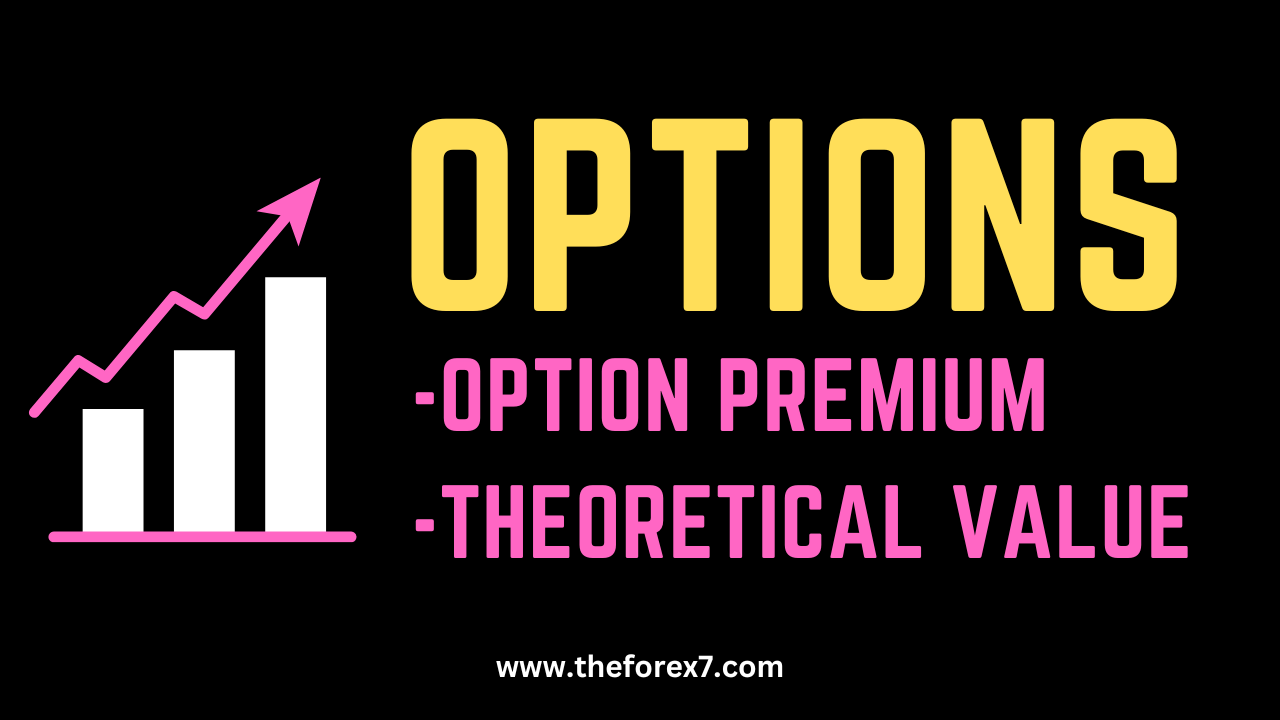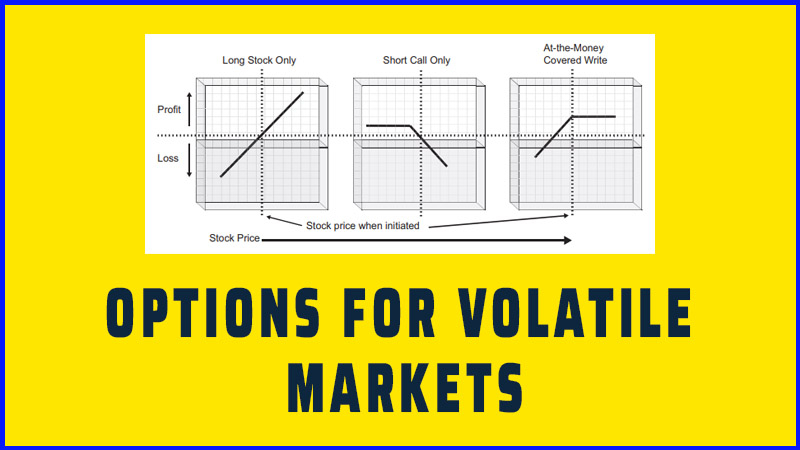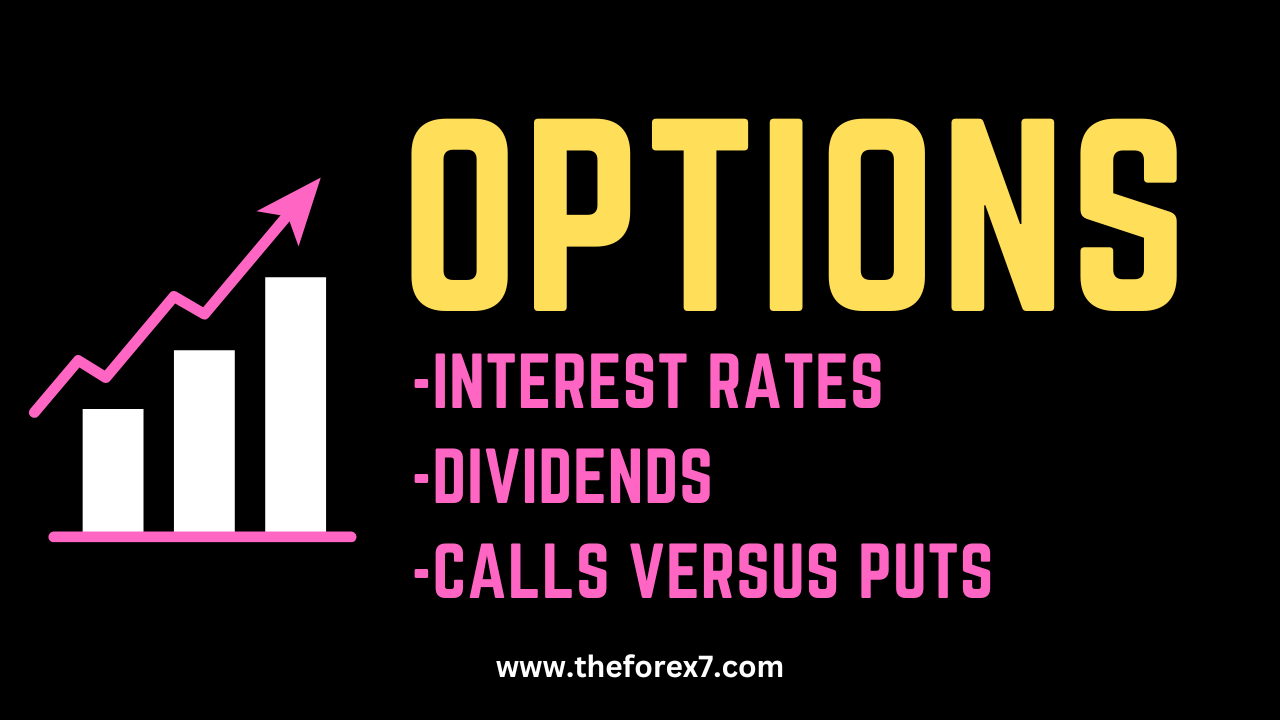Option Pricing and Valuation: Option Premium, Theoretical Value
Explain Time Value, Explain Volatility, Options price, Time value
Course: [ OPTIONS FOR VOLATILE MARKETS : Chapter 2: Option Pricing and Valuation ]
Options |

Understanding what options are and how they work is certainly a prerequisite to trading them. But the real key to trading options or utilizing them to hedge is in understanding how they are valued.
OPTION PRICING AND VALUATION
Understanding what options are and how
they work is certainly a prerequisite to trading them. But the real key to
trading options or utilizing them to hedge is in understanding how they are
valued. The price relationship between options and their underlying securities,
between options and other options, or between options and time, volatility, or
other factors, is not always intuitive, nor is it necessarily linear. Given the
leverage involved in options, even minor pricing discrepancies or
misunderstandings can magnify themselves into substantial amounts of money.
This chapter describes the factors that
affect option prices, how much they affect them, and in what direction. Understanding each of these factors individually is important, though in reality,
your option holdings will vary in value from the combination of all these
factors simultaneously.
As a result of the wide range in strike
prices, durations, and underlying instruments, option pricing can be quite
complex and is certainly dynamic. We begin by explaining the various components
of an option’s value and what they depend on. From there, we discuss how
various factors affect an option’s price.
Option Premium
An option’s price, also called its
premium, is determined by market participants, just as that of a stock, and is
quoted on a per-share basis. Since each contract represents 100 shares (unless
adjusted due to a split or other corporate action), the amount of money you
actually pay for or receive from an option is 100 times the quoted price. Thus,
if a call is quoted at 2.25, the contract will have a total premium of $225.
The price or premium of an option has
two components: intrinsic, or cash, value and extrinsic, or time, value.
Intrinsic value is defined as the amount, if any, by which an option is in the
money (ITM)—in other words, how much money it is worth if it is immediately
exercised and the stock is sold (for calls) or purchased (for puts) at this
moment in the market. Thus, for a call option, this value is determined by how
far above the option’s strike price the stock is currently trading, and for put
options, it is how far below the strike price the stock is currently trading.
The intrinsic value changes with every tick of the underlying stock, and
out-of-the-money (OTM) options have zero intrinsic value. Any premium value
over and above the intrinsic value is the option’s time value. The simple
relationship between intrinsic and time value can be expressed as follows:
Intrinsic value + time value = total
value (premium)
As an illustration, consider the
following hypothetical scenario:
QRS stock is selling at $42.50/share.
QRS Jun 40 calls are 2.80.
QRS Jun 45 calls are 0.55.
The QRS Jun 40 call is in the money and
has a current intrinsic (cash) value of $2.50. This stems from the fact that
one could hypothetically pocket $2.50 per share by exercising the call, thereby
purchasing stock at $40, and then selling the purchased shares for the market
price of $42.50 each. The option’s time value is therefore $0.30, the amount by
which the premium exceeds the intrinsic value. The QRS Jun 45 calls have a
strike higher than the current share price, so they are out of the money (OTM).
Their premium, $0.55, is thus entirely time value. An option could have a
negative time value if selling below its intrinsic value, although this is
rare. Options do, however, frequently show time values of zero or almost zero
as they get close to expiration. (Note: Option exercises always occur at night,
and subsequently take one more day to settle. So, in reality, one could not
exercise a call option in the middle of the day and have the stock to sell at
that very moment. Nonetheless, the concept of intrinsic value assumes that one
could.)
The key valuation terms are as follows:
- Premium:
The price of an option or, more accurately, the money you pay or receive when
you buy or sell it (per-share price times 100 shares).
- Intrinsic, or cash, value: The amount, if any, by which an option is in the money.
Example: An ABC call option with a strike of 40 has $3 of intrinsic value if ABC
is trading at $43. The same option has zero intrinsic value if ABC is trading
anywhere below $40.
- Time value: The amount, if any, by which an option’s premium exceeds
its intrinsic value. Example: If ABC is trading at $43, an ABC call option with
a strike of 40 that is trading at 5 has $2 of time value. The same option has
zero time value if it is trading at 3.
- Parity:
An in-the-money option that trades exactly at its intrinsic value is said to
trade at parity.
Theoretical Value
Although options’ actual prices, like
those of stocks, are determined by the fluctuating dynamics of supply and
demand in the marketplace, participants benefit by having a sense the fair, or
theoretical, value of an option. There is a widely accepted formula for
calculating the theoretical value for any listed option, called the
Black-Scholes formula (after the two University of Chicago professors, Fisher
Black and Myron Scholes, who first proposed it in 1973). This formula, for
which Myron Scholes later earned the Nobel Prize for Economics, has become the
accepted standard for valuing options throughout the industry. Ask 10
knowledgeable research analysts for the fair value of a stock they follow and
you are likely to get 10 very different answers. That’s because a myriad of factors
can be used to determine the fair value of a stock, and there is no universal
agreement on which factors to use or exactly how to evaluate them. But, ask 10
different option traders what the fair value of any option is and you will get
10 very similar, if not precisely the same, answers. That’s because the factors
determining an option’s price are well known, well defined, and calculated the
same way by most sources.
The factors incorporated into the
Black-Scholes formula are:
- Price of the underlying stock
- Strike price of the option
- Amount of time left until expiration
- Volatility of the underlying stock
- Dividends on the underlying stock
- Interest rates
Plug the values of these variables into
the formula (as you can easily do on one of the online calculators such as the
one at CBOE.com) and you will get a theoretical value for that option. The
first two factors—stock price and strike price of the option—affect the
option’s price by determining whether or not there is any intrinsic value. By
definition, if UVW stock were trading at, say, 36.60, the 35 strike calls in
each month would all have 1.60 of intrinsic value, and the 40 strike calls
would all have zero intrinsic value, as they would be out of the money. In
fact, intrinsic value is independent of all other variables—expiration,
volatility, interest rates, and dividends. Time value, or simply time premium,
on the other hand, varies with all the other variables, and it is important to
understand how.
Time Value
How
Time Value Varies with Strike Price
Keeping all other variables constant,
time value is greatest for the strike that is closest to the current market
price of the underlying and diminishes as one gets further in or out of the
money (see Table 2.1).
The fact that time value is greatest
for the ATM option is true for any month and any volatility, and it is an
important factor in deciding which strike price to use in different strategies.
TABLE 2.1 Time Value versus Strike Price
|
Price of XYZ stock = 50 Volatility = 20% Days to expiration = 60 Interest rate = .5% |
||
|
Strike Price |
Option
Price |
Time
Value |
|
40 |
10.04 |
.04 |
|
42.5 |
7.57 |
.07 |
|
45 |
5.21 |
.21 |
|
47.5 |
3.15 |
.65 |
|
50 |
1.64 |
1.64 |
|
52.5 |
.71 |
.71 |
|
55 |
.26 |
.26 |
|
57.5 |
.08 |
.08 |
|
60 |
.02 |
.02 |
As an option buyer, you want to pay no
more time value than is necessary as that is the part of an option’s value that
diminishes each day you hold it. On the other hand, sellers look for as much
premium as they can get for the same reason.
How Time Value Varies with Volatility
Time value has a somewhat complex
relationship with volatility. For an ATM option, time value varies in direct
proportion (i.e., linearly) with volatility. Therefore, as shown in Table 2.2, the time value of a 50
strike option when the underlying is 50 will double when volatility doubles.
That means the ATM option of a stock with a volatility of 50 percent will be
twice the time value of a 50-strike option on a stock with a volatility of 25
percent, all else being equal. But remember that volatility (or, more
appropriately, implied volatility) can change, even on the same stock, over
time. A big news item might cause the options on a particular stock to spike
upward in implied volatility. Such a change in volatility on a given stock will
therefore affect the ATM options the most.
How Time Value Varies with Time
The relationship between time value and
time itself is not just important, but one of the defining characteristics of
options. You would certainly expect that an option’s time value decreases as it
gets closer to expiration, and conversely, that longer dated options have
greater time value.
TABLE 2.2 Time Value versus Volatility
|
Price of XYZ stock = 50 Strike prices: ITM = 40; ATM = 50;
OTM = 60 Days to expiration = 60 Interest rate = .5% |
|||
|
|
Call
Option Time Value |
||
|
Volatility |
ITM (Strike = 40) |
ATM (Strike = 50) |
OTM (Strike = 60) |
|
10% |
.033 |
.82 |
.000 |
|
20% |
.036 |
1.63 |
.019 |
|
30% |
.103 |
2.44 |
.198 |
|
40% |
.310 |
3.24 |
.585 |
|
50% |
.647 |
4.05 |
1.12 |
FIGURE 2.1 Time Value Decay in an Option
Both, of course, are true, but if you
expect that the time premium of a 60-day option would be twice that of a 30-day
option on the same stock and strike price, you’d be incorrect. The relationship
is not linear. In reality, you should expect to get somewhat less than twice
the time premium in the 60-day call because time value varies with the square
root of time remaining until expiration. As such, the all-important rate of
decay in time value on an option occurs more slowly in the early months and
more rapidly as they approach expiration. Figure
2.1 represents this relationship graphically.
A call with four months until
expiration will therefore not have four times as much premium as one with a
similar strike price and one month to go. Instead, it will have approximately
twice as much premium, since = 2. This means that the rate of decay in the time value of an
option is (theoretically) fastest in the last month before expiration, slowing
with each successive month farther from that date. Therefore, while you either
pay or receive more total premium with the purchase or sale of a more distant
option, you take in proportionately less for the extra time. This can easily be
seen by taking the time value of any option and dividing it by the number of
days remaining until expiration. (Most option chains will tell you the number
of days to any expiration.) By doing this, one can see how much time value per day
there is in an option, and can then compare that with the time value per day
for closer or more distant options. Bear in mind that the square root relationship
is theoretical.
TABLE 2.3 Comparison of Time Premium in Different Expiration Months
|
Price of XYZ stock = 50 Volatility = 20% Interest rate = .5% Option = Call |
||
|
Expiration |
Time
Premium |
Premium
per Day |
|
30 days |
1.15 |
.038 |
|
60 days |
1.64 |
.027 |
|
90 days |
2.01 |
.022 |
|
120 days |
2.33 |
.019 |
|
360 days |
4.07 |
.011 |
Thus, it should be used as a guide and
not held as a given (see Table 2.3).
Time value decay is an important
concept in the development of option strategies. If one plans to hold an option
for, say, one month, one would simply buy a one- or two-month option under the
rationale that paying for the extra time value of say a six-month option is
unnecessary. But in the next 30 days, the six-month option might lose less time
value than the one- or two-month option (price of the underlying being
constant), and might therefore actually represent the better choice.
OPTIONS FOR VOLATILE MARKETS : Chapter 2: Option Pricing and Valuation : Tag: Options : Explain Time Value, Explain Volatility, Options price, Time value - Option Pricing and Valuation: Option Premium, Theoretical Value
Options |

